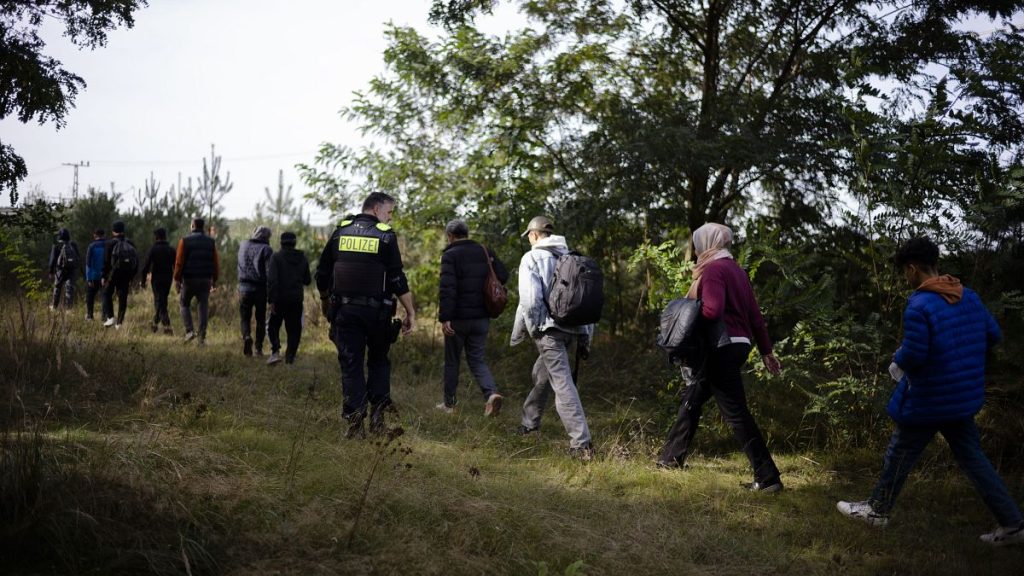The European Union’s ambitious plan to overhaul its migration and asylum system, the Migration Pact, has encountered a significant roadblock with nearly half of the member states failing to submit their National Implementation Plans (NIPs) by the December 12th deadline. These plans, crucial for outlining each country’s strategy for adapting to the new rules, were expected to detail the specific actions, timelines, and associated costs. However, as of the deadline’s passing, only 14 out of the 27 member states had complied, leaving the European Commission to grapple with the implications of this widespread non-compliance.
The delay in submitting NIPs casts a shadow over the Pact’s intended implementation by mid-2026. The Commission has expressed its intention to engage with the delinquent member states and provide the necessary support to facilitate their timely submission. While the Commission has indicated its willingness to take proportionate measures against non-compliant countries, it has also emphasized the need to consider the overall context of the Pact’s implementation timeline and upcoming submissions. This cautious approach suggests a desire to avoid escalating tensions while encouraging cooperation.
Poland, a vocal opponent of the Pact, has declared its unwillingness to submit its NIP, citing its dissatisfaction with the current framework. The Polish government, led by Donald Tusk, contends that the Pact is incomplete and prioritizes addressing the security concerns on its eastern border with Belarus, a region experiencing significant irregular migration flows. This stance highlights a fundamental disagreement regarding the focus of migration management, with Poland emphasizing border security over the Pact’s broader mechanisms for intra-EU relocation of asylum seekers.
Polish resistance to the Pact predates the Tusk administration and stems from its opposition to the mandatory relocation scheme, a core element of the new pact. This scheme aims to distribute at least 30,000 asylum seekers from frontline countries experiencing high arrival numbers to other member states. The Pact offers contributing countries three options: relocating a designated number of asylum seekers, paying a fixed amount per rejected individual, or providing operational support to countries facing migratory pressure. Poland finds none of these options palatable, a position that reflects its long-standing resistance to accepting relocated asylum seekers.
Poland’s focus on border security is further underscored by its recent decision to temporarily suspend asylum rights in specific border regions due to the influx of migrants from Russia and Belarus. This move, while controversial, received political approval from the European Commission, bolstering the Polish government’s argument for prioritizing border control measures. The influx of migrants across the Eastern Land border, which includes Poland, Lithuania, Latvia, and Estonia, reached 16,530 in 2024. However, it is crucial to note that a significant portion of these crossings involved Ukrainian nationals who are granted temporary protection and residence permits within the EU, thus not falling under the purview of the asylum system addressed by the Pact.
The divergence between the European Commission’s push for a comprehensive migration management system and Poland’s prioritization of border security underscores the inherent complexities within the EU’s migration policy landscape. While Poland received 9,519 asylum applicants in 2023, its resistance to the Pact’s relocation scheme demonstrates a deeper concern about the perceived burden-sharing imbalance and potential impact on national sovereignty. This standoff between Poland and the EU highlights the challenges in forging a unified approach to migration management, particularly concerning the distribution of asylum seekers among member states. The situation requires careful navigation to balance the need for solidarity and shared responsibility with the individual security concerns of member states. The success of the Migration Pact hinges on resolving such disagreements and fostering a greater sense of shared responsibility among all EU members. The lack of submitted NIPs from nearly half of the member states necessitates a deeper examination of the underlying reasons for non-compliance and the potential implications for the Pact’s long-term effectiveness. The ongoing dialogue between the European Commission and member states like Poland will be crucial for bridging these divides and achieving a cohesive and sustainable migration management strategy.














